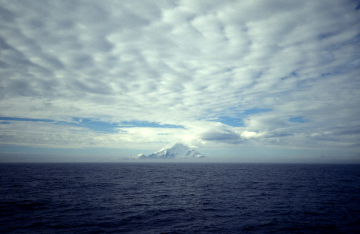710724_Whiter Clouds_360 px width.png

Phytoplankton release particles of a sulfur compound that creates the "seed" for cloud formations. These droplets make more and brighter clouds which help to reflect sunlight and help cool the Southern Ocean. Credit: NOAA Fisheries
People are always looking for ways to make things brighter and whiter—from teeth to laundry. They seldom think of brighter, whiter clouds. Yet whiter clouds are just as important as whiter bicuspids or T-shirts. They reflect more sunlight back into space, making our planet cooler.
In recent years, scientists have discovered a great cloud whitener: tiny organisms known as phytoplankton. They’re especially abundant in the Southern Ocean—the waters around Antarctica. Satellites reveal that clouds in that region are much whiter than those elsewhere.
Clouds form when water vapor condenses around tiny particles high in the atmosphere, forming droplets. The brightness of the clouds depends on the number of droplets packed into a given area. A lot of small droplets makes brighter clouds than a smaller number of large droplets.
Phytoplankton use sunlight as an energy source, so there are big “blooms” of them in the southern summer. A recent study found that the blooms correspond to an increase in the number and brightness of clouds.
The phytoplankton emit particles of a sulfur compound that climb high into the atmosphere, where they form the “seeds” for small water droplets. The small droplets make more and brighter clouds. Since the clouds reflect more sunlight, they keep the Southern Ocean cooler.
Climate change could reduce the number of phytoplankton—perhaps leading to dingier clouds in the far south—and higher temperatures everywhere.

